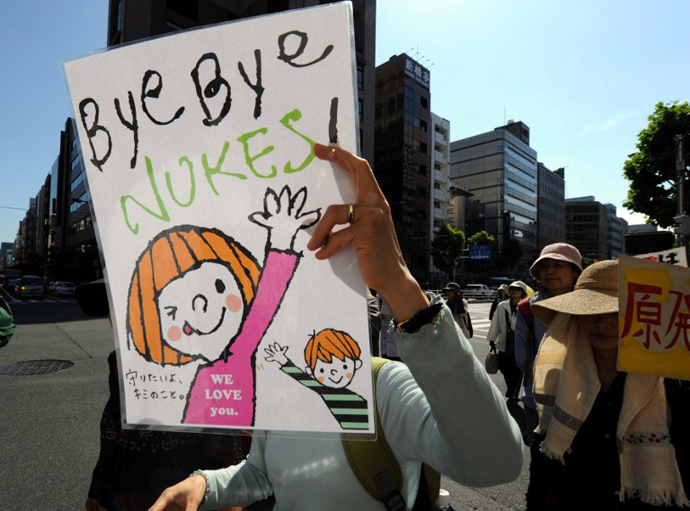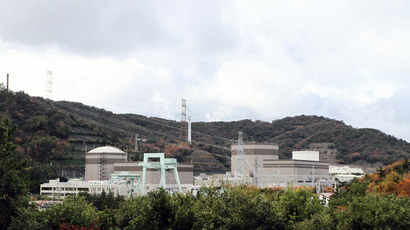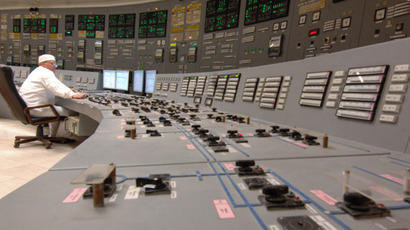‘No nukes’: Thousands in Tokyo rally against nuclear power (PHOTOS)

Thousands of demonstrators have gathered in Tokyo to protest restarting of nuclear reactors the government is considering.
Around 7,500 people participated in the anti-nuclear protests in
the Japanese capital, according to organizers cited by AFP. The
demonstrators gathered in a park in central Tokyo, marched
through the city and rallied outside the offices of Tokyo
Electric Power Co (TEPCO), operator of the Fukushima nuclear
power plant which suffered meltdowns of three reactor cores
following an earthquake and tsunami two years ago.
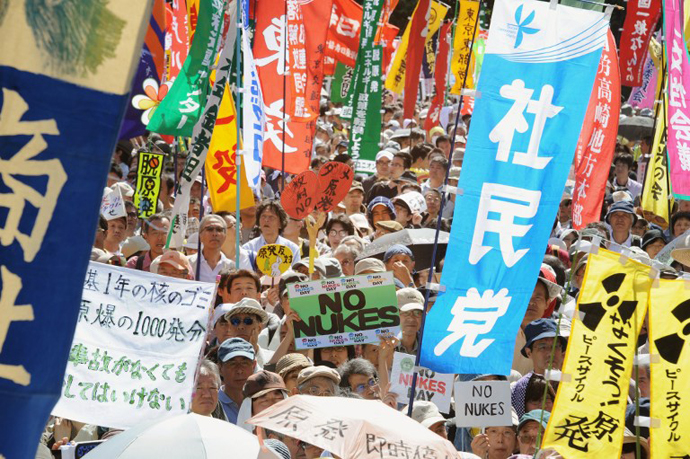
"No Nukes! Un-evolved Apes Want Nukes!" read one of the
banners held by Tokyo protesters. Disaster victims and
celebrities, including Nobel literature laureate Kenzaburo Oe,
participated in the event.
Shortly after the Fukushima disaster in March 2011, the Japanese
government pledged to fully abandon atomic energy by the 2030s.
However, in about a year authorities realized their promise was a
hasty one, as the archipelago nation had hardly any other means
to ensure sufficient electric energy supply but to return to
nuclear power generation.
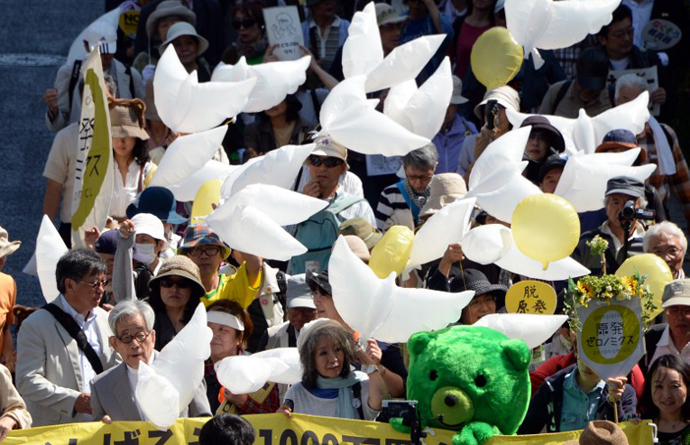
Earlier this year two nuclear reactors were put back into
operation in Japan and plans were announced to restart six more by the end
of 2013.
Prime Minister Shinzo Abe has repeatedly promised the reactors
would only be restarted if their safety is ensured by a special
supervising body - Nuclear Regulation Authority. But his words
could never quell the anti-nuclear moods in the country, where
the tsunami disaster took 19,000 lives and lead to some 150,000
residents of the Fukushima area being displaced.
It’s estimated the post-disaster clean-up would take about 30 to
40 years and cost around US$15 billion.
